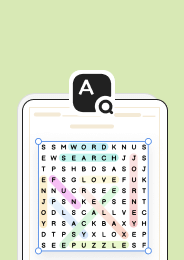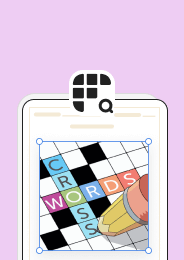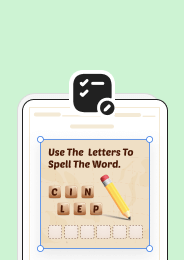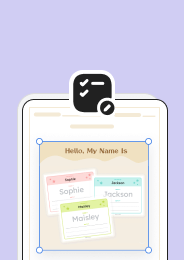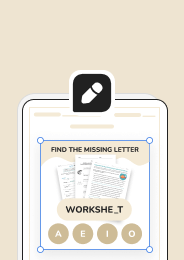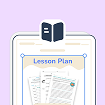Valentine’s Day is a wonderful time to teach children about love, kindness, and appreciation for others. Whether you’re looking for short Valentine’s poems for kids or educational poetry to inspire young minds, we’ve got you covered! These carefully selected poems are great for classroom discussions, creative writing activities, and even crafts. By exploring these poems, children can develop a deeper understanding of emotions, strengthen their writing skills, and learn to celebrate the special people in their lives. Explore now!
10 Valentine’s poems
Poems can help students reflect on the different forms of love, friendship, family, and self-love. Here are 10 Valentine’s poems that offer meaningful educational moments.
1. Roses Are Red, Violets Are Blue
Theme: Affection, appreciation
Literary devices: Rhyme, repetition
This timeless classic introduces students to simple rhyme schemes in a fun and engaging way. Its catchy rhythm and heartfelt message make it a favorite for expressing affection.
“Roses are red, violets are blue,
Sugar is sweet, and so are you.”
Teachers can encourage students to create their own personalized variations by filling in the blanks with different adjectives and nouns. This activity fosters creativity and helps children practice their language skills while making Valentine’s cards for friends or family.

Download the Roses Are Red, Violets Are Blue worksheet now!
2. Love Is by Nikki Giovanni
Theme: Love, gratitude
Literary devices: Free verse, imagery
This poem shifts the focus to love in everyday moments, making it relatable and heartwarming for students. It teaches that love is not only in grand gestures but also in simple acts of care.
“Some people forget that love is
tucking you in and kissing you
“Good night”
This heartfelt poem encourages students to reflect on the ways love appears in their own lives, whether it’s a warm hug, a shared laugh, or a helping hand. A great classroom activity is for students to list the meaningful ways they experience love daily. This exercise not only enhances their writing skills but also fosters gratitude and emotional awareness.

Download the worksheet for the Love Is poem now!
3. How Do I Love Thee? (Sonnet 43) by Elizabeth Barrett Browning
Theme: Deep love, admiration
Literary devices: Sonnet, anaphora
This poem introduces students to the beauty of classical poetry while allowing them to explore the idea of expressing love in different ways.
“How do I love thee? Let me count the ways.
I love thee to the depth and breadth and height.”
Through structured form and passionate imagery, Browning captures the devotion that transcends life itself. Students can analyze how love is presented in different dimensions before creating their own “Let me count the ways” lists, describing appreciation for loved ones. This activity encourages both poetic expression and gratitude.

Bring the worksheet for How Do I Love Thee? to your classroom!
4. A Valentine by Edgar Allan Poe
Theme: Mystery, hidden messages in love
Literary devices: Acrostic, rhyme
Unlike typical love poems, A Valentine by Edgar Allan Poe contains a hidden acrostic message, adding intrigue. Poe weaves romance with mystery, challenging readers to uncover the name concealed in the poem.
“For her this rhyme is penned, whose luminous eyes,
Brightly expressive as the twins of Loeda.”
This poem provides a unique opportunity for students to explore acrostic poetry while engaging in literary detective work. Teachers can guide students in decoding the secret message before having them craft their own acrostic Valentine’s poems using names or special words, blending creativity with structure.

Download the worksheet for A Valentine poem now!
5. I Carry Your Heart With Me by E.E. Cummings
Theme: Unbreakable love, deep connection
Literary devices: Repetition, metaphor
This is a simple yet deeply moving poem that expresses love as an unbreakable bond. Through gentle repetition and powerful metaphors, the poem conveys how love stays with us no matter where we go. Its rhythmic, almost song-like quality makes it especially engaging for young learners.
“I carry your heart with me (I carry it in
my heart) I am never without it (anywhere”
This poem provides a wonderful opportunity for students to explore the theme of love beyond just romance—extending it to friendships, family, and even pets. As a follow-up activity, students can write their own short poems about someone they always carry in their hearts, helping them express emotions in a creative and meaningful way.

Download the worksheet for I Carry Your Heart With Me now!
6. Valentine by Carol Ann Duffy
Theme: Love beyond clichés
Literary devices: Metaphor, symbolism
Duffy’s unconventional Valentine’s poem challenges traditional symbols of love, using an onion as an unexpected metaphor for deep and complex emotions. Through striking imagery and bold symbolism, the poem presents love as raw, layered, and sometimes tears far from the typical roses and hearts.
“Not a red rose or a satin heart.
I give you an onion.”
This poem encourages students to think beyond cliché expressions of love. A class discussion can explore how love manifests in different ways, followed by an activity where students write their own metaphorical poems using unusual objects to symbolize love or friendship.

6. Remember by Christina Rossetti
Theme: Love, memory, loss
Literary devices: Repetition, rhyme, symbolism
Written as a sonnet, Rossetti’s poem gently explores the idea of remembrance after loss, emphasizing love’s enduring presence even when someone is gone. Through its soft yet powerful tone, the poem teaches that love isn’t just about holding on but also about cherishing memories.
“Remember me when I am gone away,
Gone far away into the silent land.”
This poem invites students to reflect on the importance of memory in relationships. Teachers can guide discussions on how we keep loved ones close through thoughts and actions. As a creative activity, students can write their own reflective poems about remembering special people or moments, helping them express emotions in a thoughtful and personal way.

Use the Remember worksheet for your lesson!
7. Love’s Philosophy by Percy Bysshe Shelley
Theme: Unity, romance
Literary devices: Rhyme, personification
Shelley uses nature as a metaphor for love’s interconnectedness, illustrating how all things in the world are meant to unite.
“The fountains mingle with the river,
And the rivers with the ocean.”
This poem provides a great opportunity to explore literary devices such as personification and simile. Students can discuss how love brings people together and then write their own nature-inspired poems, using elements of the natural world to express emotions and relationships.

Download the Love’s Philosophy worksheet for your lesson!
Recommendation: To reinforce their understanding, explore our figurative language worksheets focused on simile and personification.
8. She Walks in Beauty by Lord Byron
Theme: Admiration, inner and outer beauty
Literary devices: Admiration, inner and outer beauty
This poem is a timeless poem that celebrates both inner and outer beauty. With its flowing rhythm and vivid imagery, the poem compares a woman’s grace to the night, emphasizing the harmony between light and dark.
“She walks in beauty, like the night
Of cloudless climes and starry skies;
And all that’s best of dark and bright
Meet in her aspect and her eyes;”
Through contrast and elegant descriptions, Byron portrays beauty as something deeper than appearance—rooted in goodness and serenity. This poem encourages students to appreciate beauty in different forms—not just in looks, but in kindness, character, and presence.

Bring the worksheet for She Walks in Beauty to your class now!
Recommendation: For extra practice describing people or things, try our printable adjective worksheets.
9. I Love You More Than Applesauce by Jack Prelutsky
Theme: Playful affection, comparison
Literary devices: Rhyme, hyperbole
In this whimsical poem, Prelutsky uses playful comparisons to express affection, making it relatable and enjoyable for children. The exaggerated statements (hyperbole) add humor and charm.
“I love you more than applesauce,
Than peaches and a plum,”
This poem is a great way to introduce students to hyperbole and poetic comparisons. Teachers can encourage students to create their own versions, comparing their affection to various favorite foods or activities, thereby enhancing creativity and understanding of poetic devices.

Use this I Love You More Than Applesauce worksheet for your lesson now!
Recommendation: Strengthen vocabulary with our fun synonyms activities to help students build expressive phrases.
10. Red Hearts, White Hearts by Nellie Edge
Theme: Diversity, inclusion
Literary devices: Repetition, imagery
This simple yet evocative poem uses colorful imagery to celebrate diversity and inclusion. The repetition of different colored hearts can symbolize various cultures, ideas, or feelings, making it a great starting point for discussions on diversity.
“Red hearts, white hearts,
Pink hearts, too.”
Students can create their own verses, incorporating colors and symbols that represent their personal experiences or backgrounds, fostering a sense of belonging and appreciation for differences.

Print this Red Hearts, White Hearts worksheet for your students!
FAQs
1. What should I write in a Valentine’s poem?
A great Valentine’s poem should:
- Express love, appreciation, or kindness in a way that feels personal and meaningful.
- Be short and playful with a simple rhyme or deep and heartfelt with metaphors and imagery.
- Go beyond romantic love—celebrating friendship, gratitude, family, or self-love.
- Use poetic devices like rhyme, repetition, or comparisons to make it more engaging and expressive.
2. What is a short romantic Valentine quote?
Here are some short romantic quotes you can share with your students:
- “You are my heart, my joy, my love forever.” – A sweet and timeless way to express deep affection.
- “Every day with you is Valentine’s Day.” – A lovely sentiment that emphasizes ongoing love and appreciation.
- “Love grows when shared, just like a poem.” – A poetic way to highlight how love, like creativity, flourishes when given freely.
These quotes can serve as inspiration for students when writing their own Valentine’s messages or poems.
Final thoughts
Valentine’s poems are a fantastic way to engage students in creative writing and appreciation activities. Whether you’re celebrating love, kindness, or friendship, these poems make Valentine’s Day extra special in the classroom. Don’t forget to use our worksheet tools to create engaging worksheets for your chosen Valentine’s poem and make your lesson more interesting and enjoyable!


